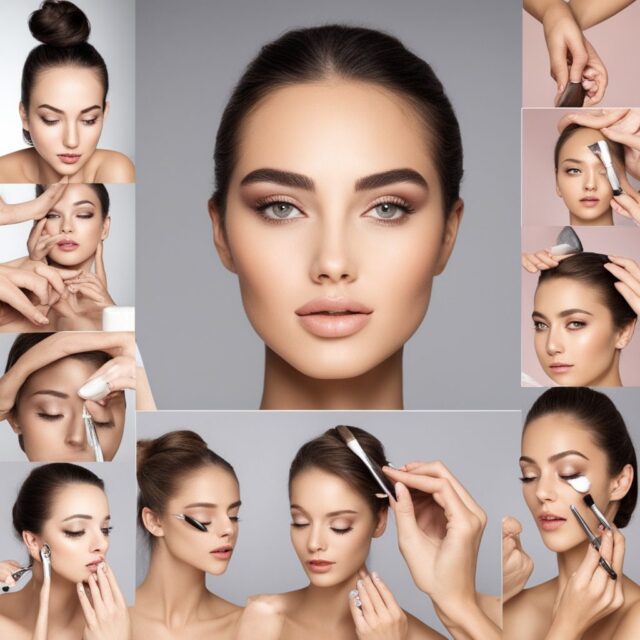Our facial aesthetics have a profound impact on our overall appearance and self-image. Of all the various aspects of facial balance, the chin plays a crucial role in defining our profile and balancing our faces. However, a receding chin, which appears to be set back from the rest of the face, can disrupt this harmony. In this blog, we will discuss what a receding chin is, what the causes are, and the different solutions to help with correcting a receding chin, including both surgical and non-surgical options.
What is a Receding Chin?
Receding chin (retrogenia) — When the chin is set back from the rest of the face, giving an imbalanced facial profile. Such a condition can impact overall facial aesthetics, self-esteem, and confidence. Those with a receding chin feel that their lower face is undefined, affecting their sense of beauty and symmetry.
Causes and Contributing Factors to a Receding Chin
Genetic Factors
Genetics are enormously influential in receding chin development. If one or both parents have a receding chin, their children inherit this trait. Genetics can also affect the structure and growth patterns of the facial bones, including the jaw and chin.
Lifestyle Influences
A receding chin can also result from some lifestyle choices. Poor posture, for instance, can worsen a receding chin by altering the alignment between the neck and jawline. Bad oral habits as a child, including breathing through your mouth, can also cause your jaw to grow differently, which could lead to a receding chin down the line.
Ageing Process
Ageing may also cause a receding chin. The skin gradually loses its elasticity and volume as we age, and the underlying bone structure can recede, contributing to a less prominent chin.
Medical Solutions
Chin Augmentation
A receding chin can be effectively addressed with chin augmentation. Surgical chin augmentation is a cosmetic surgery that involves reshaping the chin using an implant (an artificial chin implant) or repositioning the bone. So we can dive deeper into this option. Let’s explore this option further.
Chin Implants
Chin implants are a popular choice for anyone who wishes to correct a receding chin. Chin lip augmentation involves placing silicone or another biocompatible material implant over the chin bone, achieving a more defined and balanced profile. Chin implants are available in numerous shapes and sizes for a more personalized approach to suit the patient’s unique facial structure.
Sliding Genioplasty
Another procedure called sliding genioplasty is performed to fix a receding chin. Unlike a chin implant, this more aggressive option entails cutting and moving the chin bone up and forward. A sliding genioplasty is a more permanent correction and gives more control of the final position of the chin.
Non-Surgical Alternatives and Lifestyle Adjustments
Surgery can be highly successful but may not be for everyone. Thankfully, there are several non-surgical options and lifestyle changes that you can make to diminish the look of a protruding chin.
Dermal Fillers
The chin can be enhanced with dermal fillers (a less invasive and nonsurgical alternative). Doctors can inject fillers based on hyaluronic acid into the chin area to enhance projection and add volume. The results are not permanent, lasting anywhere from six months to a year, but they can lead to considerable alteration without surgery.
Posture Correction
Improving posture can positively impact the appearance of a receding chin. Maintaining good neck and head alignment can help create the illusion of a more defined chin. Simple exercises and mindfulness techniques can aid in achieving better posture and, consequently, a more balanced facial profile.
Facial Exercises
Exercises that strengthen the muscles around the chin and jawline can also further define a chin over time. While these exercises may help strengthen and tone the muscles and positively affect the overall appearance of the lower face, Botox has much more targeted effects at preventing dynamic wrinkles (the wrinkles that form with movement). The important thing is doing them regularly; turning these exercises into a part of your daily routine gives results.
Potential Risks and Complications
Like any medical or cosmetic procedure, addressing a receding chin — whether through surgical or non-surgical methods — can involve certain risks and complications. It is vital to be aware of these potential problems to make an informed choice.
Surgical Risks
Infection
Like all surgical procedures, chin augmentation carries the risk of infection. The sterile techniques used are not infallible, and there is a risk of bacterial contamination, leading to redness, swelling, and increased pain. Such infections can be effectively tackled with prompt medical treatment.
Rubbing Alcohol or Hydrogen Peroxide For Disinfection
Implant Complications
For those opting for chin implants, specific risks include implant displacement, rejection, and visibility or palpability of the implant under the skin. Displacement can occur if the implant shifts from its original position, leading to asymmetry. In rare cases, the body might reject the implant, requiring its removal.
Anesthesia Risks
General or local anesthesia is typically used during chin surgery. Although modern anesthesia is generally safe, it carries risks like adverse reactions, respiratory issues, or complications related to underlying health conditions. Discussing any medical history with the anesthesiologist before surgery is crucial.
Bone Healing Issues
Sliding genioplasty is one of those cases where the bone healing is incorrect. This may cause healing to take longer or, in rare instances, cause the bone to heal incorrectly, requiring a second surgery. With proper post-operative care and follow-up, these risks can be minimized.
Non-Surgical Risks
Allergic Reactions
Some dermal fillers, a popular non-surgical option, can induce allergic responses in specific individuals. Symptoms can include redness, itching, and swelling at the injection site. It’s essential to have a skin test, and you should get advice from a qualified practitioner before you proceed.
Tissue Damage
Incorrect filler injections can damage tissue, including lumps, uneven texture, or even necrosis if a blood vessel is inadvertently injected. Having the procedure done by a qualified and experienced surgeon can help minimize these risks significantly.
General Considerations
Aesthetic Dissatisfaction
However, whichever method is chosen, there is always the risk of aesthetic disappointment. The outcome of surgical and non-surgical treatments may not be as expected or may require additional treatments. Bagging what is wanted and needed with the practitioner with whom he practised can help align expectations.
Recovery and Downtime
Whether surgical or non-surgical, both come with a recovery period where discomfort, swelling, or bruising may occur. However, following post-treatment instructions is critical for success and to reduce complications.
Recovery Process After Surgery
Immediate Post-Operative Care
The recovery process following chin augmentation surgery, whether through implants or sliding genioplasty, typically begins with immediate post-operative care. Patients are usually monitored in a recovery room for a few hours to ensure they are stable and to manage any immediate discomfort. Swelling and bruising around the chin and jaw area are common and can be managed with cold compresses and prescribed pain medication.
First Week of Recovery
In the first week, patients should rest and refrain from heavy exertion to allow the body time to heal. The head should be elevated overnight, as swelling reduction is vital. A liquid or soft diet is usually advised to avoid irritating the area and to make eating more comfortable. Patients should also follow their surgeon’s instructions about oral hygiene to prevent infection and encourage healing.
Long-Term Healing
Swelling and bruising generally subside within a few weeks, but it can take several months to see the final results. Attending all follow-up appointments with the surgeon is imperative to secure the healing process and to make any complaints. Patients should avoid activities affecting the chin area during this time, including contact sports.
Managing Expectations and Results
It is important to be patient during recovery. Though benefits begin immediately following surgery in the form of an improved facial profile, the results will become more pronounced as the tissues heal and adjust over time. It is vital to follow all post-operative care instructions and have realistic expectations regarding the timeline and results of recovery. Well-performed chin augmentation surgery can enhance facial looks and confidence with proper care and patience.
Post-Treatment Care Tips
Surgical Procedures
-
Chin Implants:
- Rest and Recovery: Allow yourself ample recovery time. Please refrain from engaging in vigorous activities for at least one to two weeks.
- Follow-Up Appointments: Make sure to attend all scheduled follow-up appointments with your surgeon to monitor your healing process.
- Medication: Take any prescribed antibiotics or pain medications as directed to prevent infection and manage discomfort.
- Wound Care: Keep the incision site clean and dry. Follow your surgeon’s instructions for wound care and dressing changes.
- Avoid Pressure: Refrain from pressing or sleeping on the chin to avoid disrupting the implant positioning.
- Diet: Stick to a soft diet initially to avoid strain on the chin area.
2. Sliding Genioplasty:
- Rest and Recovery: Spend sufficient time resting and avoid strenuous activities for at least two to three weeks.
- Monitoring Swelling: Use cold compresses to reduce swelling and elevate your head while sleeping.
- Follow-Up Care: Attend follow-up visits with your surgeon to ensure proper healing and bone alignment.
- Medication: Follow the surgeon’s advice on taking prescribed drugs such as pain relievers and antibiotics.
- Soft Diet: Stick to a smooth or liquid diet to minimize strain on the jaw and chin.
- Wound Care: Maintain hygiene at the incision sites and follow your doctor’s instructions regarding wound care.
Non-Surgical Procedures
-
Dermal Fillers:
- Avoid Touching: Refrain from touching or massaging the treated area for at least 24 hours.
- Sun Exposure: Limit sun exposure and avoid extreme temperatures to prevent swelling and discomfort.
- Hydrate: Drink plenty of water to help maintain the results of dermal fillers.
- Follow-Up: Schedule follow-up appointments as recommended to assess the need for touch-ups.
General Tips
- Hydration and Nutrition: Stay hydrated and maintain a balanced diet to support the body’s healing process.
- Avoid Smoking and Alcohol: Refrain from smoking and limit alcohol consumption, as both can hinder recovery and increase the risk of complications.
- Listen to Your Body: Pay attention to how your body feels and contact your healthcare provider if you experience unusual symptoms such as severe pain, signs of infection, or excessive swelling.
- Patience: Understand that full results may take several weeks to months to become apparent, especially with surgical procedures. Patience and adherence to post-treatment care are crucial for optimal outcomes.
Conclusion
A receding chin can significantly impact a person’s self-esteem and confidence. From surgical remedies such as chin augmentation to non-invasive solutions and lifestyle changes, consulting professionals is essential. It is always best to consult a qualified plastic surgeon or cosmetic expert who can assess the individual’s body type and recommend suitable procedures to achieve optimal results.
If you’re considering addressing a receding chin, take the first step towards achieving a beautiful face and enhanced confidence.
Understanding the causes and exploring the available solutions for a receding chin can help individuals make informed decisions that align with their aesthetic goals. Medical interventions or lifestyle changes can help achieve a harmonious and beautiful face.


